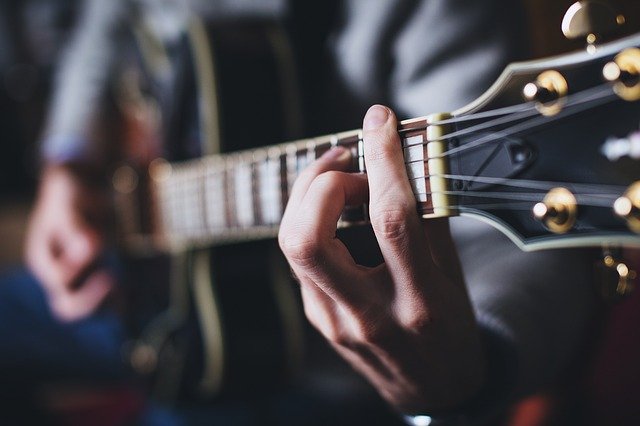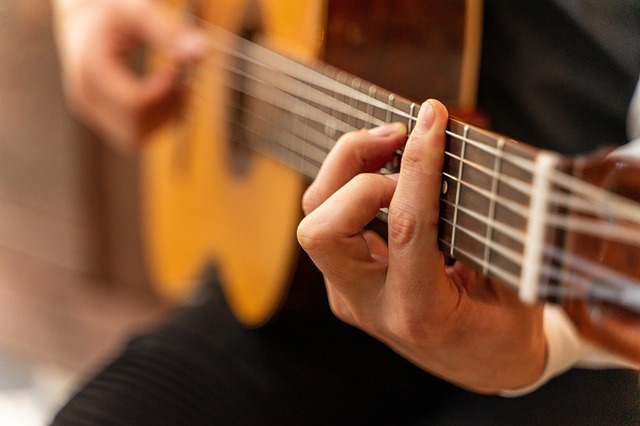
Play Barre Chords
Just ask any seasoned guitarist, and they will affirm that knowing How To Play Barre Chords is essential. Players new to the instrument can find barre chords difficult to play, but there are exercises that you can do to give your hand strength.
So, when using your first finger to barre, here are a few things to remember. 1. The first finger is very straight. 2. The wrist of the chording hand is very bent. 3. The thumb is on the back of the neck, parallel to the 1st finger which doing the barre.
Incidentally, you can use any one of your fingers to barre across the strings, and you can barre as many or as few strings as needed.
Getting better at playing barre chords is achievable with practice and exercise. You will be surprised how quickly they begin to feel easy.
Questions About Barre Chords
- How Do You Play an E Shaped Barre Chord
- Why are Barre Chords Important
- How Do You Get Better at Playing Barre Chords
- How Long Does It Take To Play Barre Chords Well
- Are Barre Chords necessary
How Do You Play An E Shaped Barre Chord
The best way to think about it is that the first finger of your fretting hand will be used to barre across all 6 strings while the 2nd, 3rd, and 4th fingers of that hand will be used to build a chord shape. In other words, when your first finger is barring across all 6 strings, it essentially becomes a moving nut.
An E shaped barre chord is one of the most common barre chords. To play an E shaped barre chord at the 3rd fret, use your first finger to barre across all 6 strings at the 3rd fret. Use the 2nd, 3rd, and 4th fingers to build an E shaped chord on the same strings as an open E chord would have.

Why Are Barre Chords Important
The barre chord is an exciting concept because it really allows you tremendous access up and down the neck of your guitar. This access, combined with basic note location knowledge, opens up avenues that let you experiment with different voicing for the same chord.
For example, an A chord might be played like any to these diagrams using the concept of a barre.

How To Get Better at Playing Barre Chords
There are dexterity exercises that you can do to help you build the strength that is necessary for building great sounding barre chords.
Start with using your first finger to barre across the first two strings at the first fret. Barre those two strings close to the fret. The closer to the fret, the clearer the sound.
Sound those two strings together, and then move your barred finger up the neck in 1/2 step intervals.

You can expand on this idea by repeating the exercise while barring across 3 strings…..and then 4 strings….and then 5 strings, and finally across all 6 strings.
How Long Does It Take To Be Able to Play Barre Chords
The answer to how long it takes to learn how to play barre chords will depend on a lot of factors. One of the main factors will be the quality of your Guitar.
If you have a cheap guitar, or a guitar with bad action, it can take a while for you to get good at playing barre chords because you are fighting the inadequacies of the guitar. You will be doing yourself a tremendous favor by starting off with a good quality guitar.
Some of the obvious factors would be the size of your hand compared to the size of your guitar. Your general hand strength and how many times, or rather how much effort you put into perfecting your barre chords, will play a roll in your progress as well.
The more time and effort you put in, the quicker you will get there..
Are Barre Chords Necessary
Barre chords are necessary if you want to advance beyond being a beginner guitar player. You can get away with playing a few chords in open position, but it is natural to want to move into more advanced chord voicing that getting up the neck will provide. If you are interested in the instrument itself, rather than as just something to accompany your singing, you will want to know barre chords.
That being said, some accomplished song writers choose to only use chords in the open position because that satisfies all the requirements they need.
